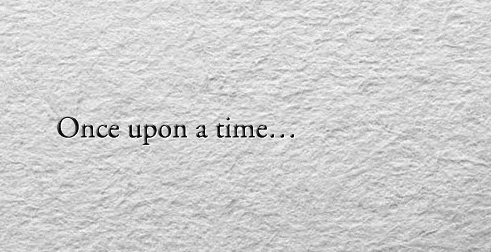The Science of Storytelling

By Ken Peters
"Truth, naked and cold, had been turned away from every door in the village. Her nakedness frightened the people. When Parable found her she was huddled in a corner, shivering and hungry. Taking pity on her, Parable gathered her up and took her home. There, she dressed Truth in story, warmed her and sent her out again. Clothed in story, Truth knocked again at the villagers’ doors and was readily welcomed into people’s houses. They invited her to eat at their table and warm herself by the fire."
Storytelling is the most effective way of persuading people and motivating them to translate ideas into action. The need for narrative is hard wired into our brains. That’s why in branding story is not optional – it’s essential.
ONCE UPON A TIME...
Your brand has something unique to say – story helps you say it to the world. Story imbues your message with meaning, metaphor, allegory and analogy. Such mnemonic devices help the brain encode perceptual experience. They evoke images and trigger memory – with all its rich sensory and emotive associations – engaging consumers both cognitively and emotionally.
Story is how human beings make sense of the world. We think in terms of beginning, middle and end seeking to define cause and effect. Our brains force narrative structure onto our experiences. Even when we sleep our brains actively assemble stories. Our need for narrative reflects the very nature of our perceptual experience.
“Do you want to buy something” pushes people away; “let me tell you a story” draws people in because the human brain requires resolution to a story. “The human mind yields helplessly to the suction of story,” ~ Jonathan Gottschall. Branding with story engages the brain at multiple levels. Speak and the brain processes language. Discuss speed and agility and the brain’s motor cortex revs up. Describe a scent and the brain’s sensory cortex activates.
Story prompts us to form personal connections with what we’re hearing. This allows people – in fact requires them – to place themselves into your brand narrative to co-author. Fantasy is a necessary ingredient. As a result, brands grow not only through the stories they tell, but also through the stories people tell themselves and each other.
A compelling story is the foundation of your brand strategy; the touchstone for creating awareness, building loyalty and commanding a premium. Brand narratives evoke history, define expectations, elicit emotions – and create memories.
Our lives are defined by our memories. Brain scans show different regions of the brain light up when someone recalls an episode, demonstrating how memories represent an index of previously recorded sensations and thoughts. Everything we do from riding a bike to tying our shoes, scrambling an egg or sending a Tweet relies on our prior knowledge of similar events. In fact, human consciousness experiences the present for only one and a half seconds; everything else is a memory.
Branding with story develops memories that determine the buying decision well before the point of purchase. When faced with dozens of automobile choices features alone aren’t enough to close the sale. Your unique brand narrative influences the decision by ensuring consumers associate owning your car with feeling or appearing younger or affluent or safer or more stylish or whatever message your story conveys.
THE PLOT THICKENS
The brain stores memories in two ways. Short-term recollections, such as phone numbers, are processed in a highly developed area called the pre-frontal lobe. Such recollections are translated into long-term memory via the hippocampus, an area deeper in the brain.
Simultaneous memories from different sensory regions of the brain are connected in the hippocampus where cells form a single “episode” of memory. For example, separate recollections of how a restaurant looked, sounded and smelled combine to form a single episodic memory of a dining experience.
As memories flash through the hippocampus the connections between neurons associated with a memory eventually become a fixed combination, so that if you hear a piece of music for example, you’re likely to be flooded with memories you associate with a previous experience where you heard that same music. That’s why a particular song can transport you back to a special moment or sea air and the sound of laughter might remind you of summers at the beach.
The brain synthesizes information and input to make sense of experience. If no coherent story is obvious, we automatically fabricate one of our own, reinforced by emotions associated with memories. Brand narratives establish coherent stories. You can’t control how people think, but your story gives you influence; subtly shaping beliefs, behaviors, desires, values.
People align themselves with brands that reflect their personal values. Storytelling activates neurologic processes enabling them to heuristically incorporate your message into their own experience and equate it with their ethics. The result is a deeper, more meaningful impression.
That impression becomes even stronger when story transcends mere words. People experience the world through five senses; great branding engages each one. Design is the animating principle of the brand narrative. Ultimately, it’s about designing a complete sensory experience that informs and motivates while stimulating the brain at every touchpoint.
Signals such as shape, size, color, texture, temperature, sound, space, aroma and even ritual provide opportunities to tell the story with more than words. These signals become distinguishing aspects of your brand identity that activate memory triggers. Those triggers, wherever encountered, stoke ideas, emotions and associations that enable consumers to discern and connect with your brand in a cluttered market. Everything you say and do is part of your brand story and every element should reflect the essence of your brand back to your audience.
THE MORAL OF THE STORY
Storytelling has always been mankind’s primary method of communicating. As we devise faster more diverse forms of connection the need for brand cohesiveness across the communication spectrum becomes ever more important. Story offers cohesion.
Tell an interesting story with a relevant point about an intriguing product. Shuffle the preceding adjectives as necessary. Offer people a chance to connect and write themselves into your brand narrative and everyone will live happily ever after.
___
Ken Peters is Co-founding Partner and Creative Director of Nocturnal Branding Studio, a full-service branding and design agency located in Phoenix, AZ. He's been known to design for everyone from Silicon Valley giants to start-up cat toy manufacturers. His work has garnered him everything from a host of awards to a grateful kiss on the cheek. He also makes a mean teriyaki chicken dish, but it hasn't earned any awards. To talk to Ken email him at: ken@nocturnaldesign.com
©Nocturnal Studio

